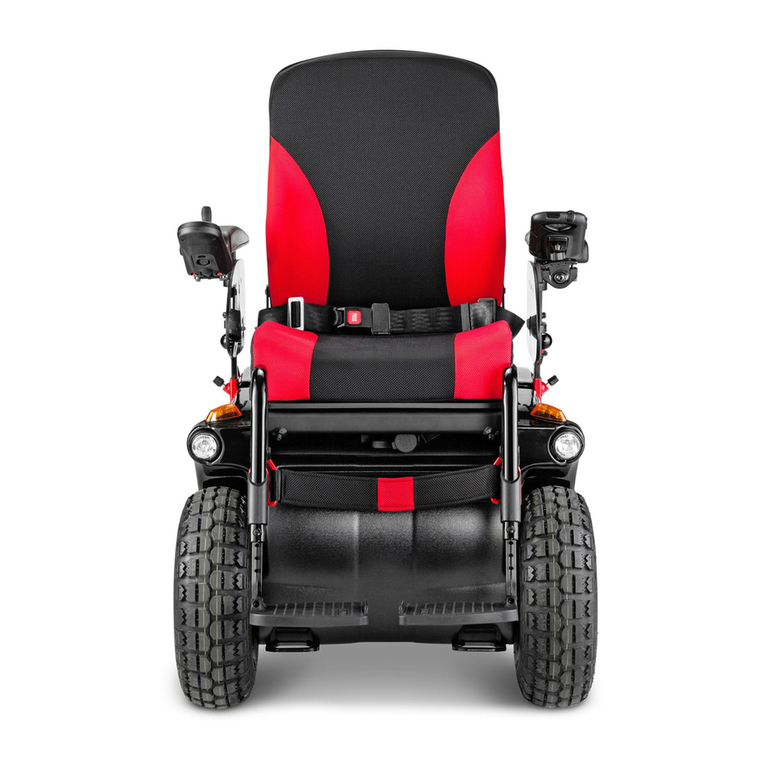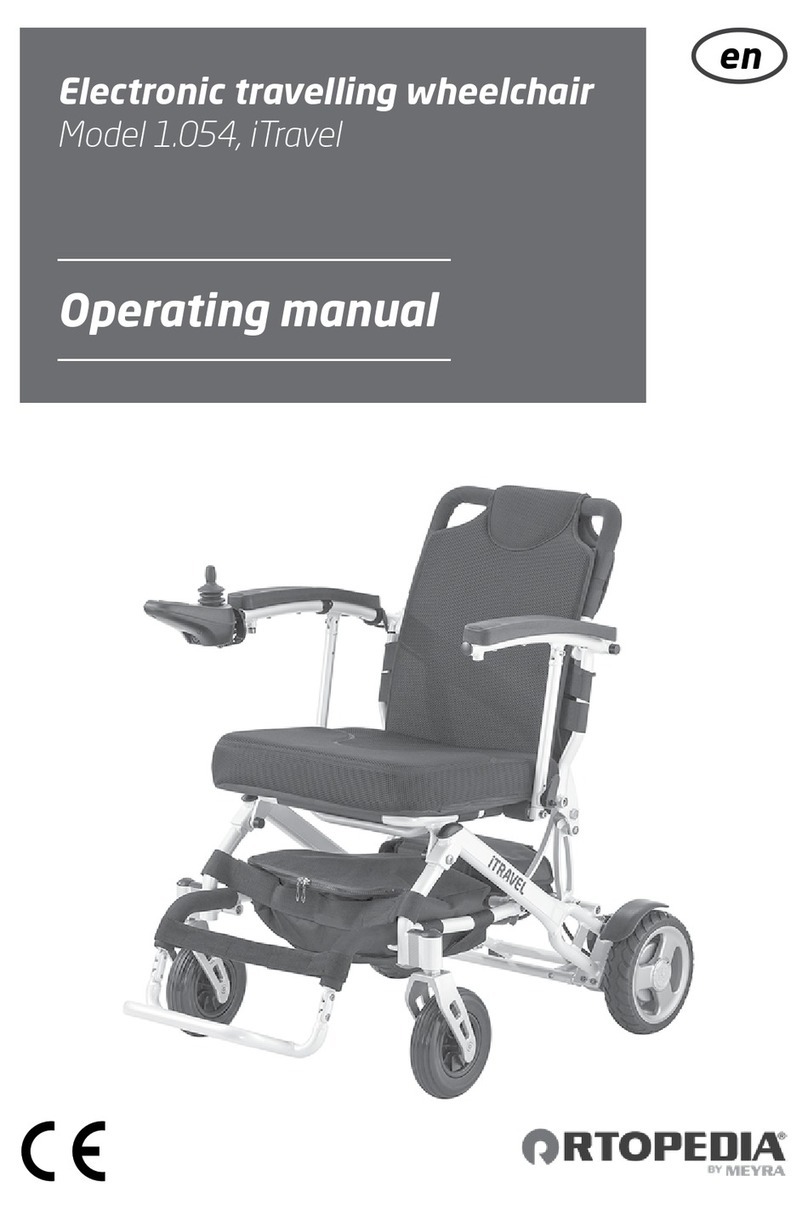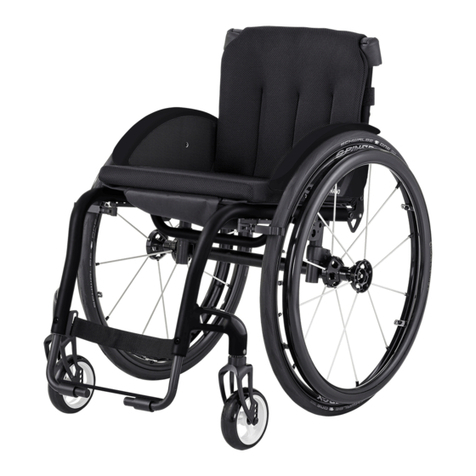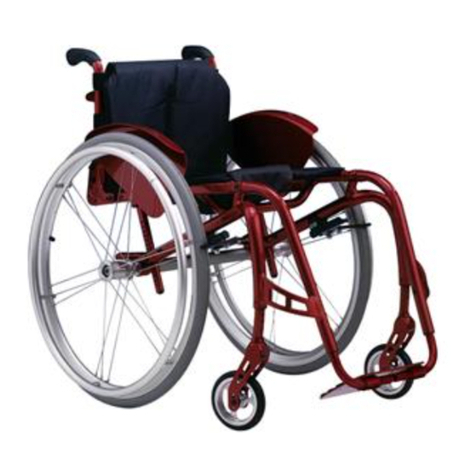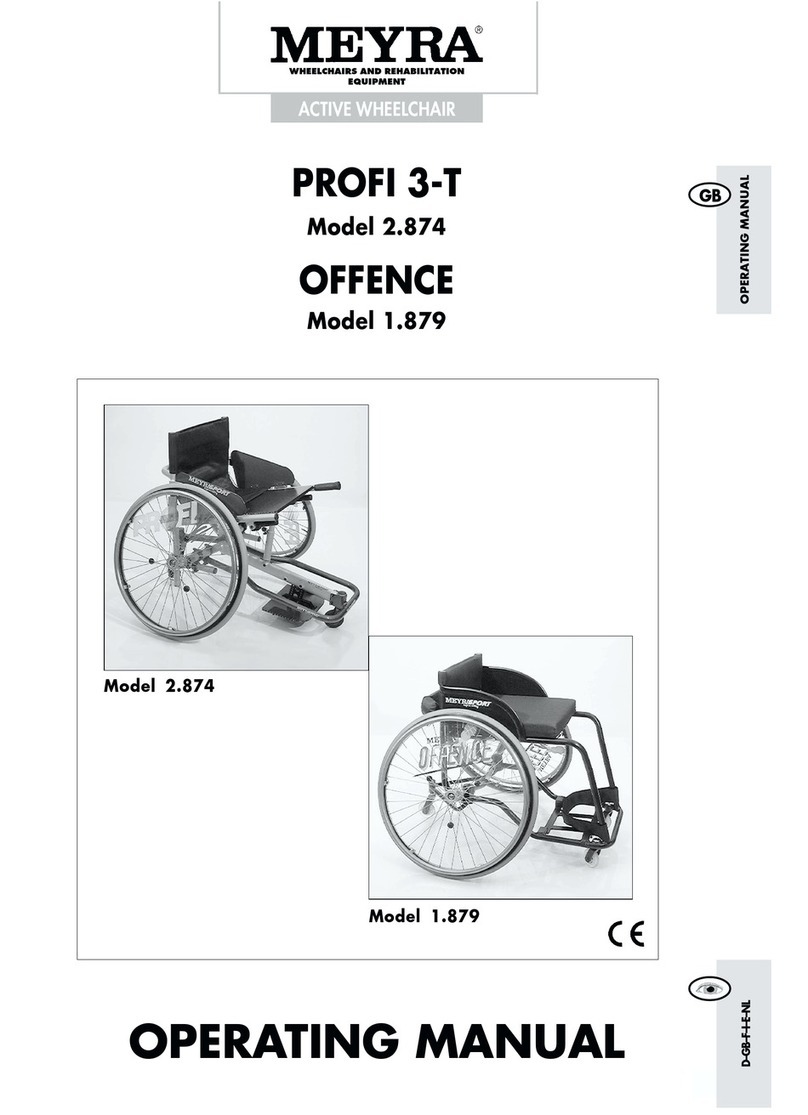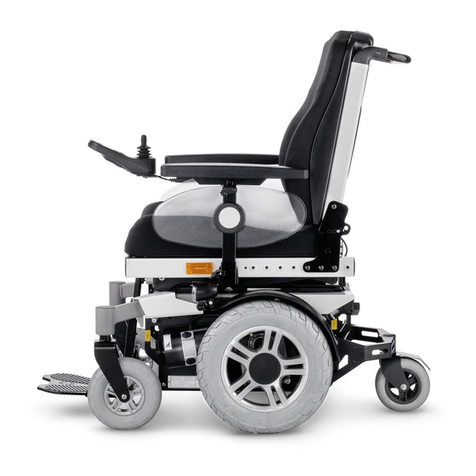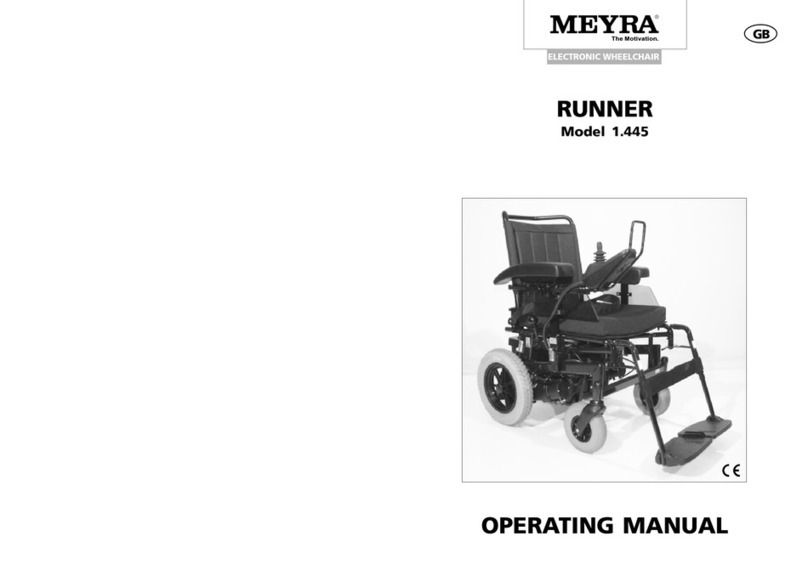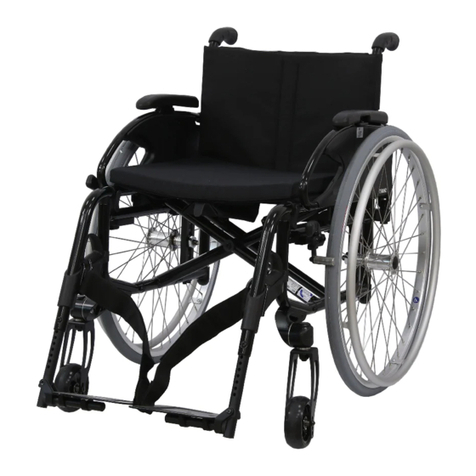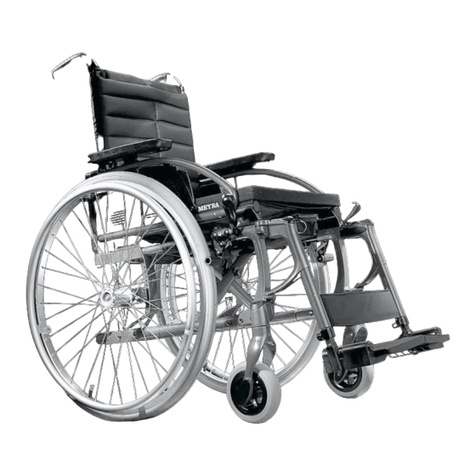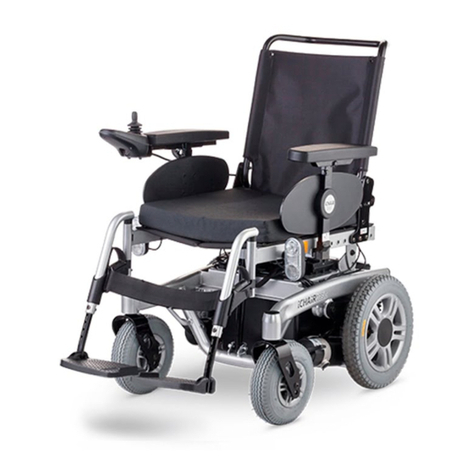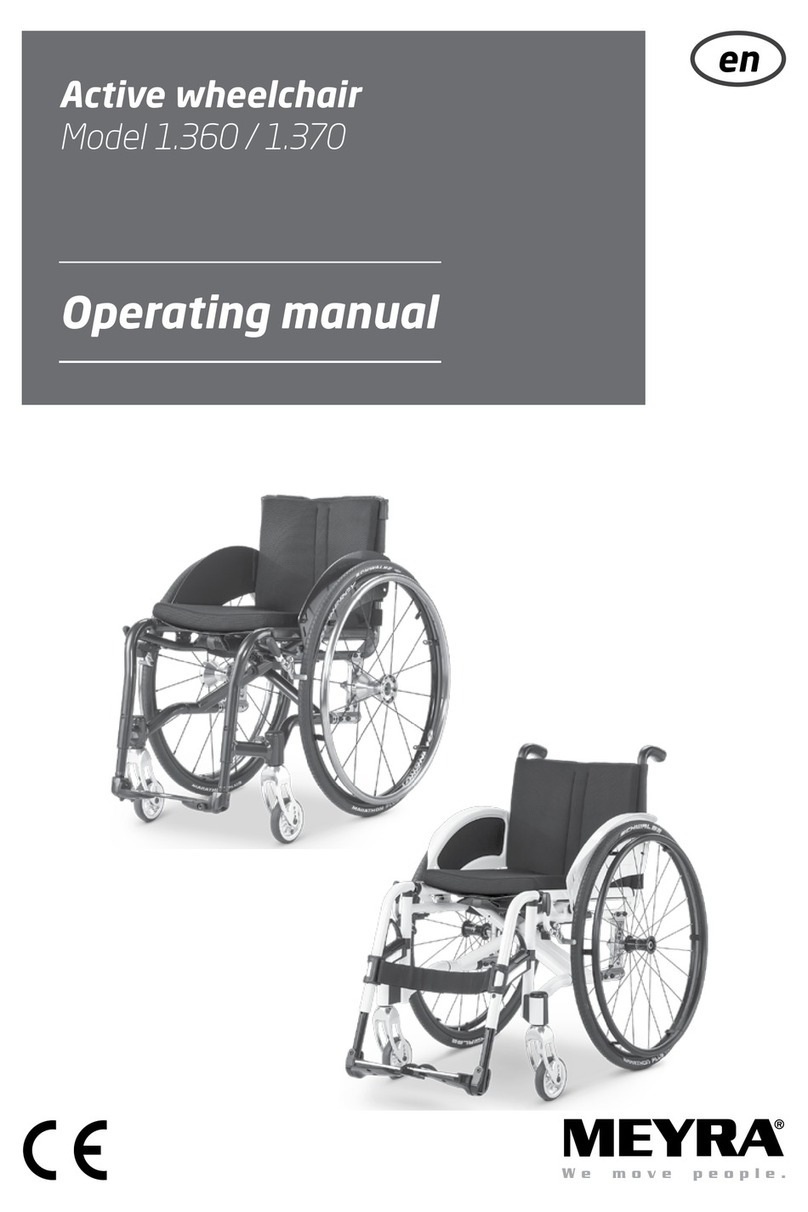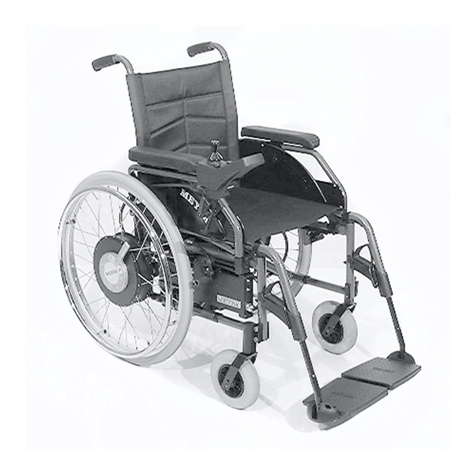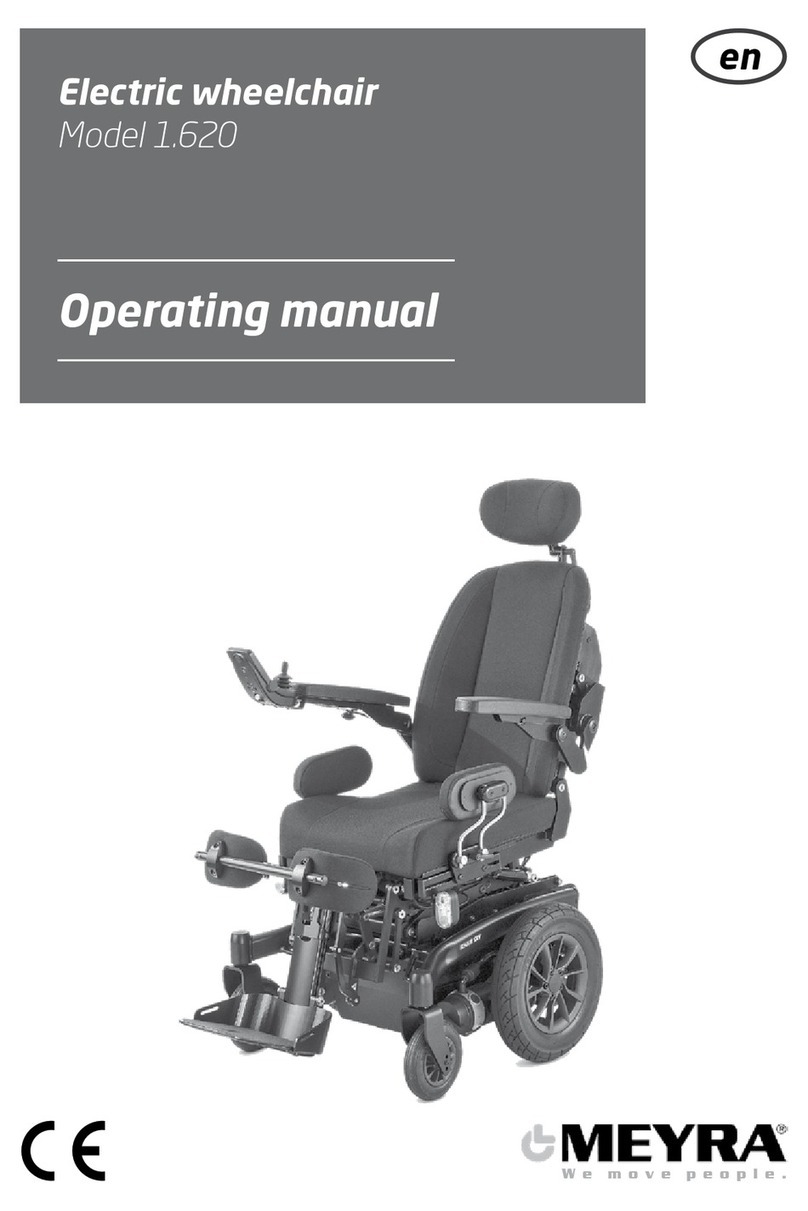
5
MEANING OF THE AP-
PLIED MARKERS
Safety instructions with a coloured back-
ground are mandatory and need to be
observed under any circumstance!
☞This symbol indicates tips and recom-
mendations.
[ ] Reference to a picture number.
( ) Reference to a function element within
a picture.
INTRODUCTION
Read and observe this manual before first
operation.
Before first use, children and adolescents
should read this document, in necessary
together with their parents, resp. a super-
visor or accompanying person.
Your specialist dealer should also intro-
duce you into the use of your shower and
toilet wheelchair.
This manual is to help you get accustomed
to the handling of the shower and toilet
wheelchair as well as to prevent accidents.
☞Please note that the illustrated equip-
ment variants can deviate from your
model.
Therefore you will also find chapters that
might not apply to your individual shower
and toilet wheelchair. A list of the available
options and accessories can be viewed in
the order form of your shower and toilet
wheelchair.
Users with visual impairments can find the
PDF-files together with further information
on our website:
< www.meyra.com >.
☞Contact your specialist dealer when re-
quired.
Alternatively users with visual impairments
can have the documentation read out by a
helper.
Inform yourself regularly about product
safety and possible recalls of our products
in the < Infozentrum > on our website:
< www.meyra.com >.
We have developed a product that fulfils
the technical and legal requirements of
medical devices. For information about a se-
vere accident that can still not be ruled out
completely, please use our E-mail address
sible governmental agency of your country.
LIST OF MODELS
This operating manual applies to the follow-
ing models:
Model 8013039
Model 8013040
Model 8013041
Model 8014041

